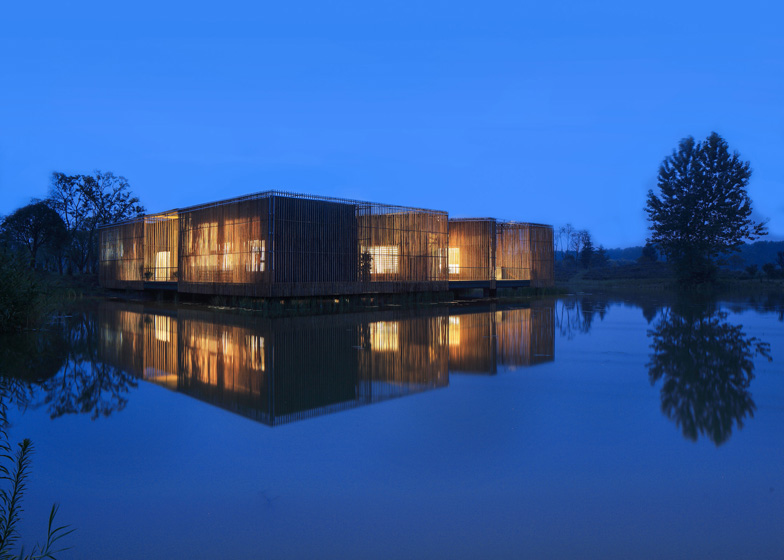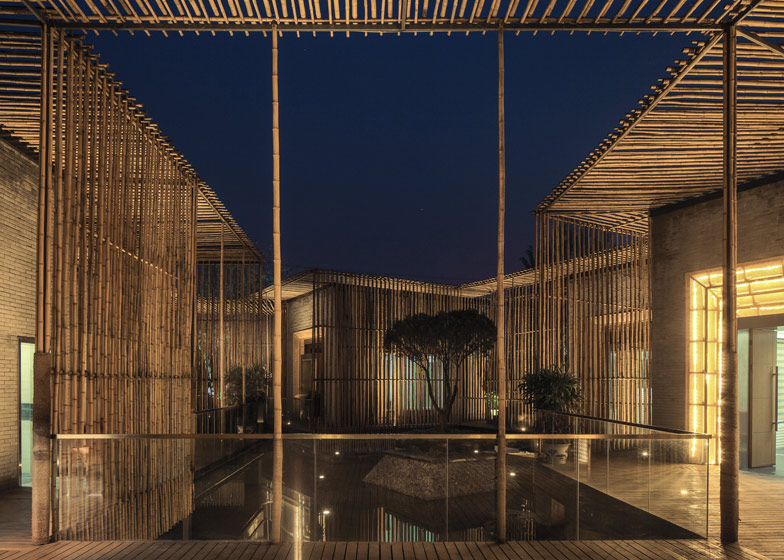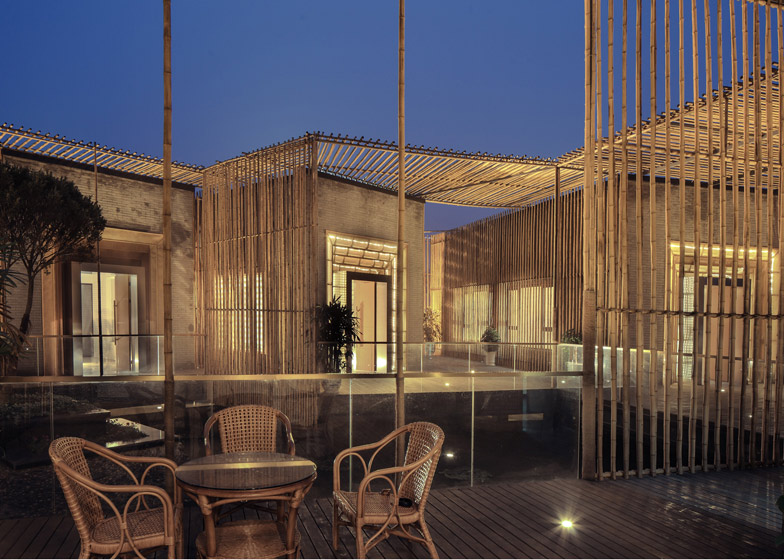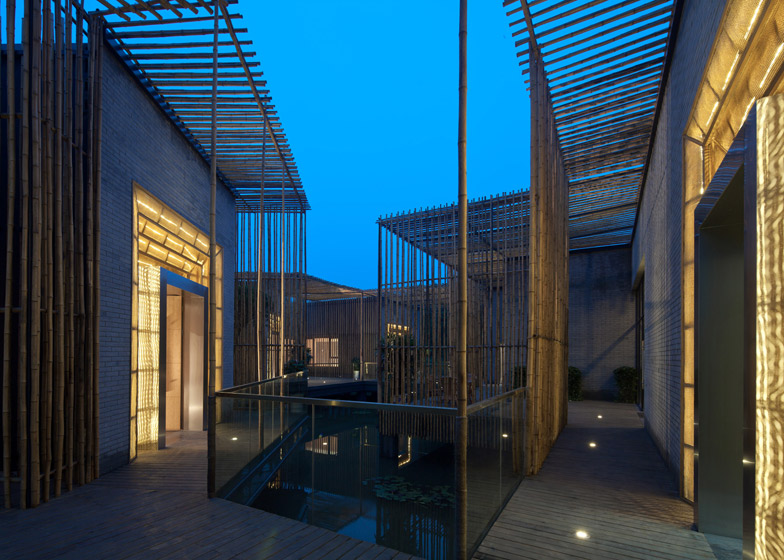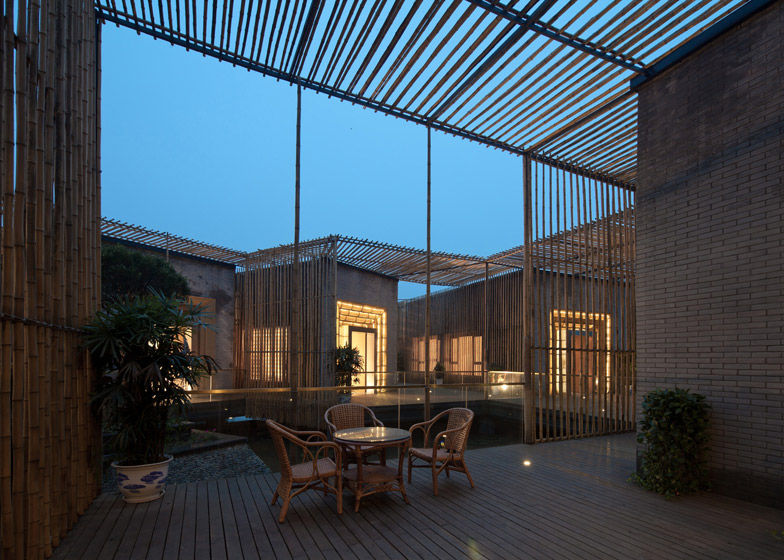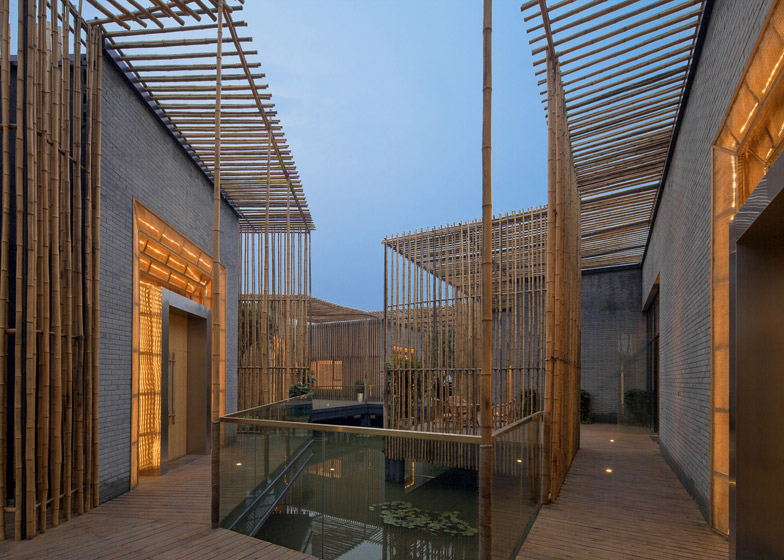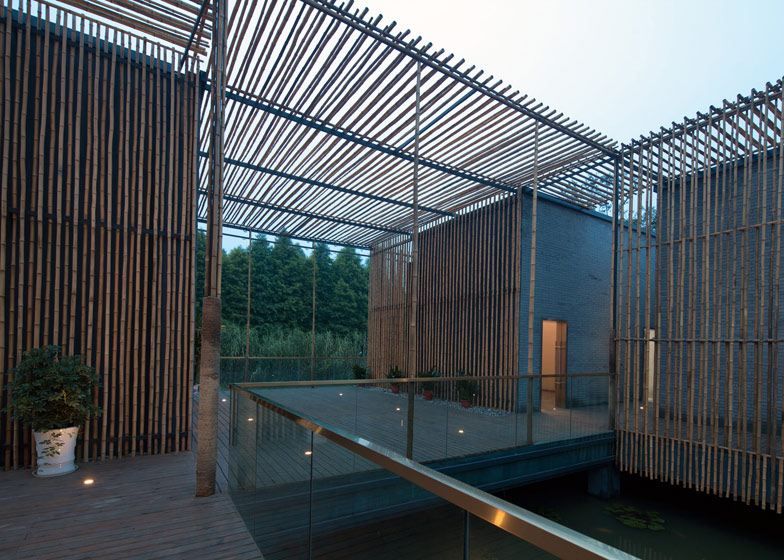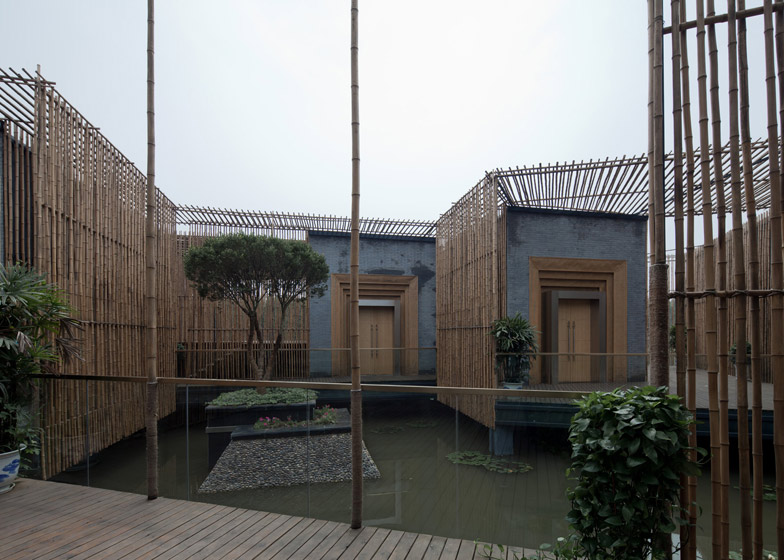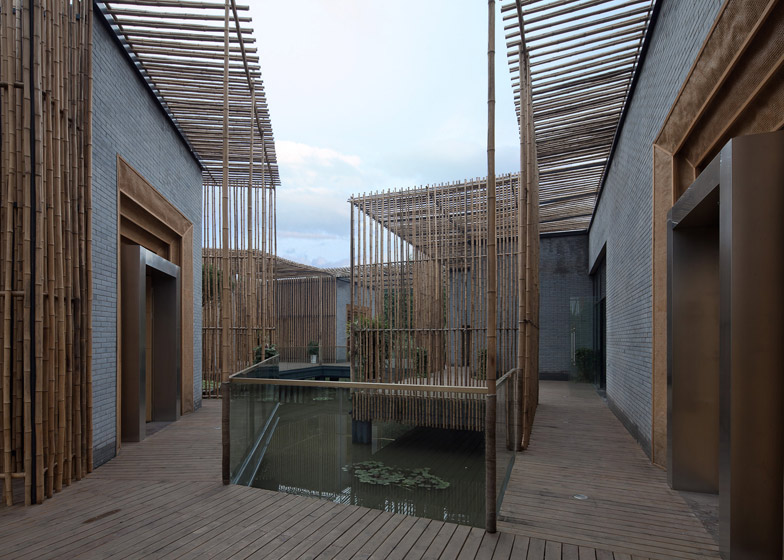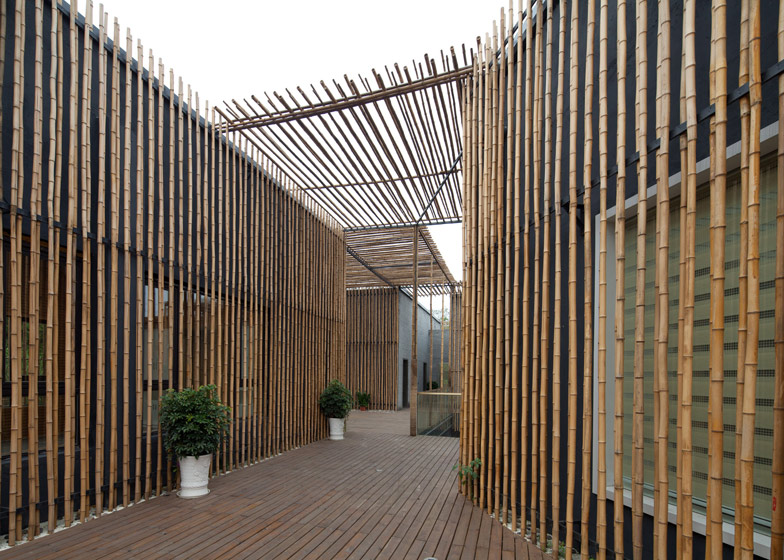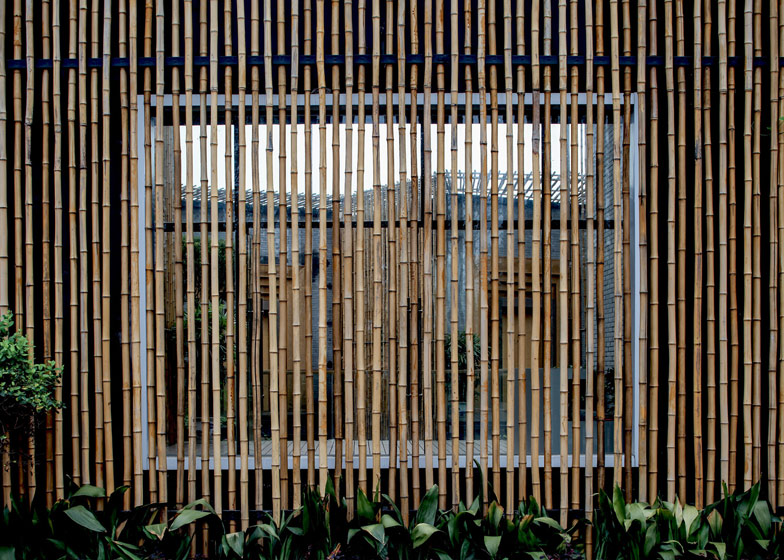More bamboo: this floating tea house in Yangzhou, by Chinese architects HWCD Associates, features brick rooms linked by louvred bamboo corridors and brises soleil.
Situated in the ShiQiao garden in Yangzhou, a city to the northwest of Shanghai, the tea house is organised in asymmetric cubes on a lake.
Tall rows of bamboo create corridors along the outdoor walkway. The bamboo is arranged vertically and horizontally to produce "interesting depth" and visual effects as you walk around, the architects told Dezeen.
Lights are inset into the door frames, providing a glowing pathway between the grey brick buildings.
We've featured tea houses from all over the world on Dezeen, including a lantern-like structure near Washington, D.C. and a timber and rope teahouse in the Czech Republic.
Recent stories about bamboo architecture include a Bangkok hair salon with thousands of bamboo stalactites and a thatched bamboo bar in the middle of a lake in Vietnam.
See all our stories about tea houses »
See all our stories about China »
Here's some more information from the architects:
Tea, one of China’s most precious culture heritages has remained popular throughout the thousands of years. As tea leaves come from modest tea trees, through the long process of picking the leaves, drying the leaves and finally produces a cup of tea.
Thus, tea requires an unassuming setting in order to understand its lengthy process. Today, the appreciation of Chinese tea has become an art and furthermore, many teahouses are designed for this purpose.
Amongst the lush ShiQiao garden, stands this humble tea house which embraces the traditional Chinese garden fundamentals while blending into the natural environment.
The tea house is known as the bamboo courtyard as it mainly uses bamboo to create an interesting play of vertical and horizontal lines. In some spaces, the vertical and horizontal elements intensify to form a psychedelic perspective, evoking a profound sensory perception.
Traditionally, Yangzhou courtyards are formed with inward facing pavilions, creating an internal landscape space. So, drawing inspiration from this, the bamboo courtyard was designed from a basic square footprint, fragmented into small spaces to create an internal landscape area. Each of the spaces has views into the surrounding lake, allowing a panoramic view of the area.
As one walks through the bamboo courtyard, the asymmetrical corridors present an intentional semi-obstructed vision with the layering of bamboos.
There is a strong experiential sense of space, layered from one to another; from totally open to the internal lake to narrow spaces between the rough brick finish and bamboo curtain.
Section – click above for larger image
From the exterior, the bamboo courtyard has a cube form with a variation of solids and voids. The strong verticality becomes more apparent at night when the teahouse lights up to illuminate the surroundings. The simple form illustrates the harmonious blending of architecture with nature.
North elevation
Moreover, the natural materials such as bamboo and bricks have low embodied energy and low impact on the environment. The pocket of voids improves natural ventilation within the bamboo courtyard while the thick brick wall retains heat in winter, reducing the dependency of mechanical heating and cooling system.
East elevation
One who appreciates tea would understand that every serving of tea differs in colour, scent and taste even if it is from the same pot. There is a layering of experience in enjoying every cup of tea. Thus, the bamboo courtyard is an abstraction of the tea experience, creating layers of experience through spaces.
South elevation
If tea is an art and architecture is a way of life, then the bamboo courtyard is the portrait of the both worlds.
West elevation
Location: ShiQiao, Yangzhou
Client: Building And Construction Authority of YangZhou Economic and Technological Development Zone
Client-side Project Manager: YaoQiang
Design Firm: Harmony World Consulting & Design (HWCD)
Design-partner-in-charge: Sun Wei, Shi Jun
Building Area: 400m2
Completed: May 2012

